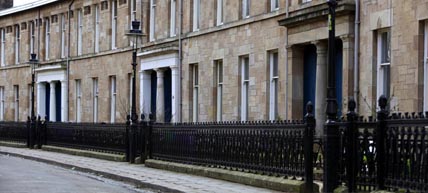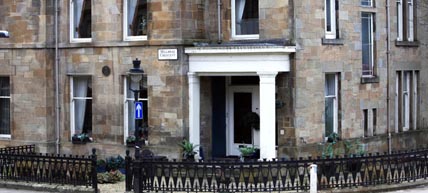The time may be right to stop renting out your property, and sell!
If you entered the Buy to Let jungle between 2010 and 2014 then you might be left feeling a wee bit disappointed by the latest Government figures on rental values.
The most recent statistics reveal that the majority of average monthly rents in Scotland’s private sector increased below the rate of inflation during that period. Indeed, some rents actually went down.
If you find yourself with tenants in your flat or house who are paying on average a lower rental than four years ago then R&T Property Solutions can help.
We offer you a quick property sale service.
If you have decided that the rental game is not for you, because the returns have not been as good as expected, then we can help in a hurry.
Because we are not acting for a third party, but rather buying to expand our own portfolio, we can make an instant decision on whether or not we want to buy your property.
In some cases we should be able to complete the arrangements to buy your property within seven days.
We at R&T Property Solutions are proud of our fast purchase service. And, although we are based in Glasgow, we operate throughout the whole of Scotland. Consequently we want to buy your property wherever it is situated.
In particular, we are looking for property which is tenanted.
As a landlord you are subject to various rules and regulations which govern regulated tenancy agreements. We are more than happy to accept these agreements and guarantee to treat your tenants fairly and ethically in line with our code of conduct.
The Government data makes dismal reading for most private landlords.
Their research found that 16 out of the 18 rental market areas across Scotland have seen below inflation changes in average rents for two bedroom properties, which is the most common size of property in the private rented sector.
The worst-affected area has been West Dunbartonshire where rents over the past four years fell by 2.7%. There were also average rent reductions in Argyll and Bute, where they fell by 1.5% during the same period and in Ayrshire where there was a reduction of 0.8%.
This is in stark contrast to the cost of living increase of around 15% over the same period.
The rest of the country recorded an increase in rental income, but in most areas it was only modest.
Here, according to The Scottish Government, is a full breakdown of the increase in average monthly rental returns in percentage terms across the rest of Scotland –
Scottish Borders: 0.6%.
Dumfries and Galloway: 1.6%.
North Lanarkshire: 2%.
Renfrewshire/Inverclyde: 2.1%.
Forth Valley, Perth & Kinross, South Lanarkshire: 2.8%.
Dundee and Angus: 4.1%.
West Lothian: 4.7%.
East Dunbartonshire: 5%.
Highlands and Islands: 5.7%
Fife: 9.8%
Greater Glasgow: 11.1%.
If you own property in any of these areas listed above, which all recorded below-inflation increases, and feel now might be the time to cash in your assets quickly, R&T Property Solutions would like to hear from you.
Our HQ is in Glasgow but we will buy property all over Scotland and have been doing so for many years.
Our fast, no-nonsense approach is designed to appeal to landlords and owners alike, who can provide tenanted or vacant possession.
Either way we will guarantee you a quick solution.
Of course, not all parts of Scotland have suffered a real-term decline in rental income.
There have been above-inflation increases in the likes of Aberdeen and Aberdeenshire where average rents for all property sizes have increased well above inflation.
To a large extent the same is true in Lothian, where rent rises for one, two and three bedroom properties have been above inflation.
In the city of Aberdeen and in the county of Aberdeenshire private rents for two bedroom properties from 2010 to 2014 rose by 39.8%.
The corresponding figure for average rents in Lothian has been 17.2%.
If you own property in Aberdeen, Aberdeenshire or in the vicinity of Edinburgh this might be a good time to sell, because the increased rental value could positively impact on the value of your assets – and there is no guarantee that this happy state of affairs will continue.
We offer a quick-sale solution and would be delighted to hear from you.
Nationally, taking into account the figures from every region, there was an average rental income rise of 11.2% for two-bedroom properties.
In real terms the average actual rental income achieved is as follows:
For the year to the end of September 2014, the lowest rental income was realised in Dumfries and Galloway where tenants paid an average of just £442 per month for a two-bedroom property.
Next came: Scottish Borders £444; Ayrshire £461; North Lanarkshire £464; West Dunbartonshire £479; Renfrewshire/Inverclyde £483; South Lanarkshire £494; Argyll and Bute £495; Forth Valley £506; Fife £510; Dundee and Angus £518; Perth and Kinross £520; Highlands and Islands £532; West Lothian £543; East Dunbartonshire £604; Greater Glasgow £626; Lothian £779; Aberdeen and Aberdeenshire £898.
The data is from the first Private Sector Rent Statistics report, part of a Scottish Government commitment to publishing more comprehensive statistics on rent levels across the country.







 REGULATED TENANCIES WANTED THROUGHOUT THE U.K***SINGLE UNITS & PORTFOLIOS BOUGHT FOR CASH***
REGULATED TENANCIES WANTED THROUGHOUT THE U.K***SINGLE UNITS & PORTFOLIOS BOUGHT FOR CASH***